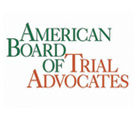When you or your loved one is involved in a bus accident, it may lead to massive damages and personal injuries. These accidents may cause physical pain and suffering, emotional damage, or even the death of a loved one. If involved in a bus accident, chances are you will have substantial medical bills that you have to settle, as well as the inability to work temporarily, or even permanently. It can be draining financially and the physical recovery may be long. Thankfully, it is possible to file a lawsuit against the person or persons involved. In filing the suit, the court will require you to provide evidence to determine fault in your case.
The evidence must show negligence on the defendant's side to claim and receive damages. You will need expert legal representation that will guarantee you receive the justice and compensation you deserve. At the Los Angeles Car Accident Attorney, helping our clients collect such vital evidence is our forte. It enables you to focus on being back on your feet and fully recovering. In the following sections we will discuss the type of evidence required in court for you to have a strong case and receive compensation for the personal injuries sustained.
Overview of Bus Accident Cases in California
If you are involved in a bus accident, the injuries sustained can be fatal as buses are massive vehicles that pose a challenge in operating and stopping. Most bus accidents result from negligent behavior from the driver operating them or the bus company cutting corners. At times, non-observance of the road laws are a common cause of accidents.
Specific scenarios that may result in your involvement in an accident are:
- Being hit by a bus while crossing the road, as a result of reckless driving by the driver
- Being injured while getting off from the bus due to a hurried driver
- Being injured by a bus that is involved in an accident and rolled over, knocking your car
- Head-on collision by a bus due to negligence from the bus driver
- Being injured on a bus you are traveling in
As earlier noted, the accident's reasons might be attributed to recklessness or negligence from a single party or more in some cases. Whichever is the case, there are high possibilities that you will suffer significant injuries that will result in hefty medical bills, coupled with a lot of pain and suffering.
There are instances where you may not have visible injuries. You should still seek immediate medical attention to rule out possibilities of having internal damage or bleeding. It is also crucial to summon law enforcement officers' attention immediately when you find yourself in an accident. They will file a report that will come in handy in demanding for damages later.
In summary, the following are the immediate steps that you must take to gather evidence required in court;
Find Medical Attention
The immediate steps you take, such as finding medical support, will determine if your chances of winning a legal suit will be increased or lessened. Eyewitness encounters and the police report will buttress DUI evidence in the legal battle that may follow later on. Finding immediate medical attention is vital, as your health is paramount. You will also need the medical assessment report from your doctor to ascertain that the injuries sustained were from the accident.
Contact Law Enforcement
The driver may contact the police immediately after a bus accident. However, if you notice that the police are taking too long to arrive at the crime scene, you can take up the initiative and contact them as well. Once the police arrive at the crime scene, you may need to be very careful with the information you share with them. Your words might come to haunt you later on and reduce your chances of finding justice. You must contact your attorney before engaging the police further.
Contact a Personal Injury Attorney
Without the personal injury attorney, it might prove difficult to win a legal suit in a bus accident case. You might end up incriminating yourself or taking liability, making it impossible to find any proper legal redress in the aftermath of the accident. You would help yourself immensely if you refrain from discussing the accident's details with the insurance firm. Your legal representative will take up the matter and start pinning together vital evidence vital in the legal suit.
The critical thing here is to avoid deal offers from insurance companies that would seek to undercut you. They usually will propose settling the damages for a figure that is way less, and you will forfeit chances of receiving adequate compensation for your injuries. Do not also do a hurried deal agreement with the driver of the bus. Insist on contacting your attorney before anything else. It will help you avoid unnecessary liability.
Liability Proof and Evidence Collection in a Bus Accident Case
Filing claims in a bus accident are essential in having you access compensation and address accountability in the accident. Responsibility is crucial, mainly because if proven the other party was the cause of the accident, they should be punished to deter such negligent behavior in the future. Furthermore, you will have to identify the person or persons who caused the accident to be accountable. It is a crucial aspect of the necessary evidence in bus accident cases.
There might be multiple or a single party involved, who may be held responsible. In such a case, responsibility is placed on you, proving negligence on the other party. For you to verify this exhaustively, you will have to show that:
- You were owed a duty of care, in which you have to show that the defendant violated their responsibility of ensuring that they do not cause you harm.
- The defendant breached the duty of care owed to you. As part of the crucial evidence under this element, you may have to prove that the bus driver was careless, speeding, or was under drugs or alcohol influence.
- The defendant's breach of care was the cause of the injuries you sustained during the accident. Your attorney is mandated to show the court how this breach was the cause of the accident.
Do not always presume that the bus driver was to blame after an accident, even when you are the victim. It is a general assumption that is not usually correct. Liability might be on several parties who may be at the scene of crime or not. Sometimes, a bus defect beyond the driver's control might cause the accident, putting the manufacturer at fault. Regardless of who the liability falls to, your end goal is to have all those responsible compensate you for the harm caused.
Your attorney will come in handy in assisting you to navigate the different terrains in the case and put together a strong case in your defense. As part of your evidence, the following groups of people can be held accountable in proving liability;
The Driver of the Bus
The driver carries the responsibility of ensuring that your commute from one point to the next is safe. They need to exercise caution and care, mainly because they commandeer a larger vehicle on the road. They should ensure that they don’t hit other smaller automobiles or hit fellow road users, including pedestrians. If not careful, the bus driver could cause an accident when:
- They were driving when tired- Bus drivers must have the required amount of rest between and after their work to remain sharp during their drive. If fatigued due to neglecting this directive as stipulated under the law, they will be prone to making a wrong judgment, causing road accidents. Evidence showing the driver might have been tired would see them take responsibility for the accident.
- They were influenced by drugs or alcohol while driving- As a leading cause of accidents in the state of California, drunk driving quickly makes a driver lose focus, swerve, and accidentally hit a car, causing an accident. If traveling on the bus, you might end up crushing, causing you injuries. DUI evidence will be buttressed by eyewitness encounters and the police report.
- Driver error- Errors occasioned by the driver are in many different forms. A driver may fail to check the blind spots or fail to keep the recommended distance from vehicles ahead and behind. While difficult to prove, a competent personal injury attorney will help you pin together the details that would see the driver implicated.
- The driver was distracted-distraction means that the driver wasn't focused on the road. They might have been eating, texting, or talking on their phone. Such reckless behavior may hamper their ability to judge the road's situation to avoid a bus crash. If you can prove that the driver was distracted, you stand a chance in convincing the jury that they were responsible for the accident.
- The driver was speeding- Driving under the recommended speed on the road is suitable for everyone. A driver who might have been speeding would ideally have been the sole cause of the accident due to their aggressive unwarranted conduct. The evidence adduced in court would have to prove that the driver was speeding, and the bus had exceeded its requisite speed limit.
When collecting the evidence, you will consider the driver's official information and cite this as evidence in court. The Bus Driver's Log Book will come in handy. Your attorney will investigate aspects such as the driver's certifications for road tests, traffic violations, driving records for each year, employment application, and others.
The Owner of the Bus
The bus owner and companies the buses are registered for transport are vital in ensuring commuters' safety. The bus owner should only purchase the bus if in proper condition without any manufacturing defects. On the other hand, the transport companies ensure that the buses are appropriately loaded to avoid carrying beyond the approved load limit.
The owner also needs to hire drivers who meet the prerequisites of operating a bus in this capacity. In case the driver caused the accident due to negligence of his own, the owner may still be held liable. While maintaining the buses in proper working conditions may be expensive, it is the owner's responsibility to ensure repairs are done. They also need only to use quality parts to avoid substandard and cheap bus parts that will be disastrous in the long run.
With evidence that the bus owner caused the accident, you can receive compensation. Your attorney will help you evaluate the possibility of holding the owner to account for the accident and pay up damages.
The Manufacturer of the Bus
To save on money, some bus manufacturers go for defective and substandard components. In most cases, these faulty parts do not last long and are a safety hazard that would lead to a catastrophic accident. Features that are defective include:
- Tires- Faulty tires are a significant concern as they play a big role in ensuring proper grip and bus suspension on roads. Over prolonged use, the tires become prone to wear and tear and require regular replacement to ensure they are in peak condition. Unfortunately, some manufacturers use tires that have been on the shelf for so long. At times, they also use those that have expired and are fitted on the buses as new.
- Brakes- Driving without proper functioning brakes is disastrous. A driver may suddenly need to engage the brakes to initiate stopping. If the brakes used are defective, the bus will need to hit an object to stop. The item hit can be another car or a pedestrian.
- Seat belts- Protecting you from a crush or keeping you seated safely, seatbelts play a crucial role. If they are not in proper condition, they will not function as desired and may even be the reason for your injuries.
When manufacturers choose to use any of these and other parts, they are directly guaranteeing your safety or otherwise. If they have a defect, they will jeopardize your chances of being safe if an accident occurs. While it is impossible to know beforehand if the parts used are correctly functioning, you can sue the manufacturers if you are injured in a bus accident. Regardless of how complicated this may be, your legal representation will look for compelling reasons to hold the manufacturers liable.
While putting together evidence, the inspection and maintenance records of the bus will be scrutinized by your attorney. The tires, breaks, lighting systems, rearview mirrors, windshield wipers, and emergency kits will be vital evidential material.
Other Road Users or Drivers
As noted earlier, it would be wrong to make presumptions that the accident was solely the bus driver's fault. There are many instances where the accident's cause might have been external factors that the driver wouldn't control. For example, due to the buses' categorized as a heavy vehicle, it is prone to rear-end collisions if not properly driven. If other drivers on the road do not keep the bus's required distance, it could lead to crashes. It takes a relatively long time for a bus to initiate braking.
Furthermore, there are times when pedestrians are held liable in case of a bus accident. For instance, if a pedestrian suddenly attempts to cross the road without observing if the road is clear, the driver may make an abrupt stop causing an accident. As a victim, you can sue the pedestrian as long as you gather evidence to prove that they were the cause of the accident that resulted in your injuries.
In doing so, you would rely on:
- Witness testimonies
- Police reports
- Videography or photographic evidence- It is advisable to take photography or videography evidence immediately. Such evidence may include road signs, skid marks, other vehicles at the scene of the crime, and injuries that you sustained. Advisedly, you need to assess the situation as accessing medical help may be the first call to make, and leave the collection of evidence to your attorney.
Specific Injury Evidence
As a victim of bus accidents, the chances are that you sustained some specific injuries. As earlier discussed, it is crucial to seek immediate medical attention to be checked by a doctor to prevent escalation. The doctor will give you a medical report that will serve as a critical evidential material in court. You may suffer injuries ranging from;
Deep Cuts and Lacerations
Due to the impact, the chances are that you may contact sharp objects in the accident. The contact may be with metal or shattered glass that may cause cuts and bruises. Based on the accident’s severity, you might sustain minor to significant scratches. You may also sustain lacerations, and in some cases, you may have internal organ bleeding. Even after proper healing, these injuries might leave you psychologically traumatized or with permanent marks.
Receiving compensation is a step towards addressing such lifelong unplanned issues. All these injuries will be noted in your medical report and will form the basis of your evidence.
Broken Bones
Broken bones are usually a result of being hit or thrown on the bus's wall or body in a crush. In most cases, broken bones might cause a prolonged hospital stay and costly medical bills, as it may be expensive correcting. At times, you might not be able to report to work at all due to the bones' weakness. In personal injury claims, evidence of broken bones is vital and will serve as a reason for seeking damages.
Brain and Head Concussion
In some severe cases, you might suffer a severe brain injury. Being hit by a blunt object may cause traumatic brain injuries or even a broken skull. The brain is in charge of sending signals to the body for proper functioning. A brain or head injury would be fatal. You may sustain mild brain injury or permanent injury that might lead to far-reaching consequences.
With a report from your doctor indicating the severity of the head and brain injury, you can use it as evidence in court in pressing for compensation.
Injuries on the Spinal Cord
Motor skills depend on the proper functioning of your spinal cord. In a bus accident, rolling during the crush might cause injuries on this delicate yet vital part of the back. With evidence to this effect, you may sue for damages, as correcting spinal cord injuries is quite expensive.
General Evidence for Compensation
In filing for compensation, substantial evidence is a must if you intend to succeed in your lawsuit. All the above discussed evidential material have to be substantiated in court exhaustively.
Important pieces of evidence that you must have may include presenting medical bills. With a medical report, all the costs you incurred during treatment will be cited as evidence in court. It might be expensive, especially when it comes to offsetting bills associated with severe injuries sustained during the bus accident. With a strong case, you can be able to press for compensation for the financial strain you underwent.
You may as well present lost wages evidence. With your employer’s letter, past bills, or tax returns, you can show that during the period you were nursing injuries., you did not earn.
Additionally, based on the severity of the accident, you may sustain injuries that would leave you incapacitated. It may make you lose the ability to return to work or seek employment. In this case, you can seek compensation for loss of future earnings. You will strengthen evidence by showing that you indeed have lost the capacity to earn.
The point to note is that you need to preserve all the evidence collected properly. You may do this by duplicating the photos and videos, asking for receipts duplicates from the hospital, having copies of police reports, or obtaining 911 call records if the driver placed a call after the crash. With proper representation and expertise from your attorneys, such evidence can be appropriately preserved and adduced in court in your favor.
Find a Car Accident Attorney Near Me
If you or a loved one is involved in a bus accident, the focus must be on being well physically. In this endeavor, you will need competent accident attorneys to handle the aspect of evidence collection and file a lawsuit on your behalf for compensation for the injuries sustained. At the Los Angeles Car Accident Attorney, our goal is to target parties at fault, employ aggressive discovery methods to reach the bottom of the case, and represent you expertly. Reach us at the Los Angeles Car Accident Attorney at 424-237-3600 to discuss your case's details.






